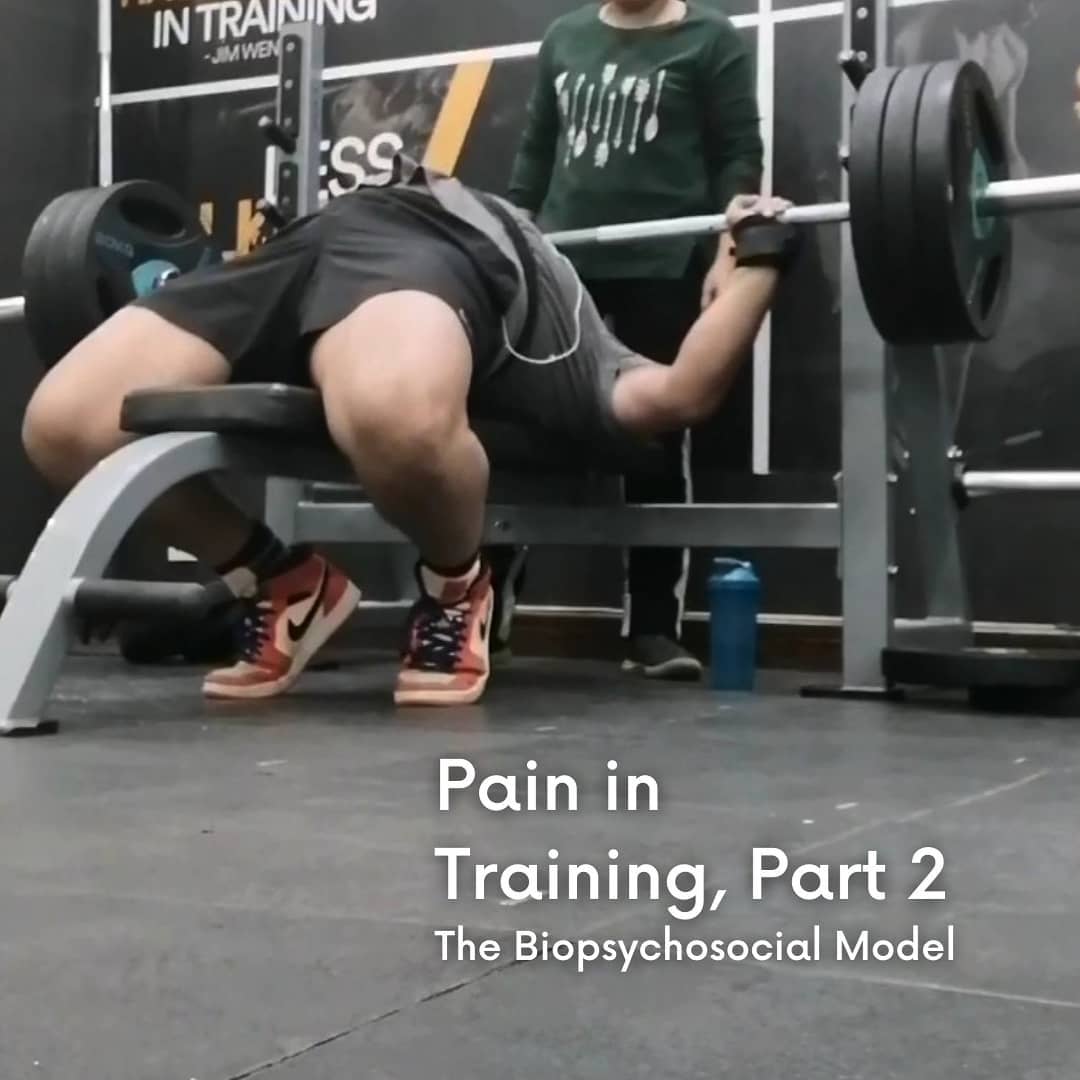
Pain in Training, Part 2 The Biopsychosocial Model
You prolong your pain by wallowing in it.
Many health and fitness professionals still believe that pain occurs solely due to mechanistic reasons (only occurring due to tissue damage). However, we now know that this is not always the case.
The Biopsychosocial Model is widely used to assess and manage pain. It suggests that pain is multifactorial, instead of purely mechanistic.
A simple breakdown of factors the model considers:
- Bio: Physical conditions that cause pain.
- Psycho: The individual’s emotions, self-talk, experiences, and so on.
- Social: The behaviour and attitude of loved ones, acquaintances, and society as a whole
In the presence of pain, catastrophizing is a very easy hole to fall into. People regularly jump to conclusions such as slipped discs in the case of back pain (physically impossible), or some other unlikely scenario. In this case, assuming the worst hurts more than it helps.
I generally advise my lifters to maintain a positive mindset and normal movement as best they can. From there, I have them update me frequently, and I provide suggestions and reassurance.
Socially, Kinesiophobia (fear of movement-induced pain) is fairly common. Videos of athletic activities commonly have people remarking on how the activity looks dangerous, and how their knees/back/shoulders could never endure the activity. Health and fitness professionals are also typically quick to prescribe complete rest and indefinite avoidance of movements that might cause discomfort. In the very short term, this is not the worst advice, but this approach also tends to develop Kinesiophobia in those dealing with chronic issues, who in turn affect the psyche of those around them. Unless their environment has knowledgeable or emotionally intelligent people, I do end up suggesting that lifters keep their pain to themselves, since it is easier to work past the issue without other people instilling additional fear.
To sum up, you prolong your pain by wallowing in it, and the people around you can also influence your perception of pain.
